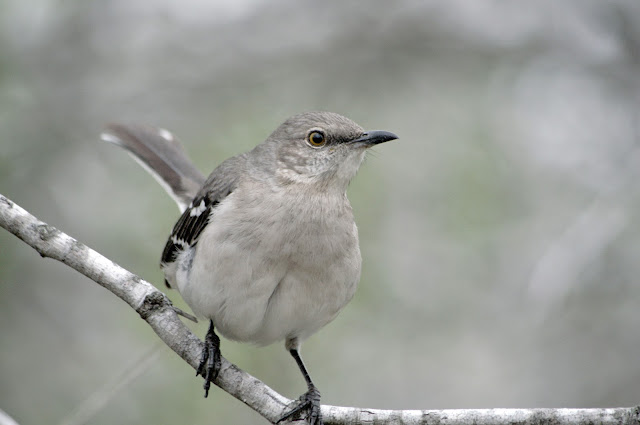White-breasted Nuthatch
Sitta carolinensis
Red-breasted Nuthatch
Sitta canadensis
I'm not sure that I had ever seen a Nuthatch before and now I've spotted and photographed two species within a month's time on opposite sides of the state. I spotted the White-breasted Nuthatch at a Davis Mountains State Park bird blind area and was fascinated by the way it worked the crevices of a hanging piece of cedar, It deftly moved around and seemed more comfortable being upside down than right side up. From a recent article in the Houston Chronicle by Gary Clark, I'm apparently fortunate to be seeing Red-breasted Nuthatches in my Houston-area backyard as they do not normally migrate this far south. I have three of these birds working the feeders between my yard and a neighbor's. They have been difficult to photograph as they only stay long enough at the feeder to grab a sunflower seed before flying into the upper branches of my oaks trees where the lighting is rather poor for photographs. Once they find a fork in a branch, they wedge the seed into it and start pounding on it with their beak to crack it open and into bite size pieces. If a piece falls, they quickly fly down and grab it before it's lost and then go right back to the business of pounding on the seed. Like the White-breasted Nuthatch, the Red-breasted Nuthatch works up and down branches and is more often than not moving down a branch in an upside-down position. Both species of Nuthatches have quite a loud call for such a small bird. Actually, the Red-breasted Nuthatch's call was so unique to my ear that it quickly got my attention and now I know what I'm looking for when I hear it. Their call has rather accurately been described as sounding like a small tin horn. As the photographs above demonstrate, their color pattern sets them apart with the white being much more bright on the White-breasted and the rust underparts much more distinctive in the Red-breasted. The Red-breasted also has a black eye-line.


























